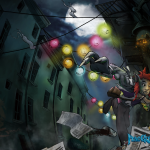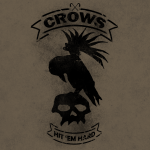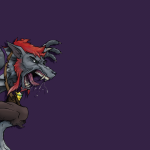 From time to time I get emails from indie developers, students mostly, just starting out all bright eyed and optimistic. I still remember what it was like to be those, mostly.
From time to time I get emails from indie developers, students mostly, just starting out all bright eyed and optimistic. I still remember what it was like to be those, mostly.
When responding I find myself going over the same information a bit, so I thought it might be a good idea to post one of these to give others access to this information, and also create a nice link to send people to if they’re asking roughly the same questions. Efficiency!
The questions, which were asked in a very polite and gracious manner, I will paraphrase, and replace key words [LIKE THIS]:
I’m currently completing my final year at [GAMES UNI] studying Games Design, I’ve recently decided in opening up my very own Indie Studio. This year I will be trying to develop a few games briefly and quickly to gain an income to move onto this full time as I finish the course. My first project is a [GAME] that will be for iOS, Android, Android Tablets and Steam (PC and maybe Mac).
I’m trying to build a portfolio and I wanted to have a discussion about the processes and development cycle you had undertook with Jolly Rover. Especially in terms of business model, marketing approach and various other topics. Also curious about how you charted the project in terms of what were the biggest achievements, individual deadlines to parts of the project, if you out sourced parts of the game and what milestones you had inputted.
This was my response.
Well it only took about a week, but I’m getting back to you! Now, what were you saying… Ah ok. So firstly it seems like you want to develop a few projects quickly to earn money. Not sure how much you’re expecting to earn off a few quick projects, but I can tell you that some projects that have taken 3 months full time to develop by professional developers have barely made $100, so be careful about your expectations on this. I’m not trying to discourage you, but what I would suggest is taking the time to polish one simple idea and then spending some time marketing it to see how that goes. Even decent quality indie games may only bring in a few hundred a month, outside of sale periods. So what you need to to earn will depend largely on what your living expenses are like, and what money you need to move on to a new project.
Before you release you’ll need some kind of infrastructure, which will be the website at least, then a facebook page, and twitter, and a nice logo. You can get a pretty good looking page up and running quickly using wordpress, so if you haven’t thought of what you might use then that might be a good place to start. You’ll find more and more that to get a game out to market successfully, you’ll be doing less and less game development. I used to say it was 50% development 50% everything else, but that number is skewing to maybe more like 20-30% game development, then everything else. Ultimately, it’s a business. Do you have your business hat handy?
Then after you release the game you’ll go into support mode, or a handful of customers will get loud and cranky and tell everyone to avoid your game. Each new game you release will need to be supported via bug fixes and responding to users, even doing interviews and providing press with keys. You’ve got to do this or your game will essentially die. So keep in mind you’ll be supporting the previous game as you’re developing the new one. So again, best to focus on one nice title, than a few “cheap” ones.
With regard to Jolly Rover, that was funded through Film Vic, so I had to do a business and marketing plan, and a SWOT (Strengths, Weaknesses, Opportunities, Threats) analysis, I also had to provide them with a budget, that took into account business expenses such as internet, phone, utilities, etc, as well as payment of contractors, and a project plan, which charted major milestones, and how I was going to achieve them. This isn’t required for any game developer to do, but it is important to really understand how the game you’re making will work from a business standpoint. i.e. if you want to make a 2D platformer, who are your competitors (75% of indie developers!), what are their weaknesses, what are your strengths, what is the opportunity for your game to stand out, what threats/challenges (i.e. inexperience) affect the game. I had to properly analyse my market, the adventure market, and try to determine the audience size, and demographic, and how many copies I could expect to sell, at what price, and how I was going to achieve that. I got in touch with a number of adventure enthusiast websites to ask them about traffic and numbers, and sales, but all this is usually difficult information to come by. This is so you don’t make a mistake of thinking there’s a market where there isn’t one, i.e. making an FPS for 80 year old women, or a dress up game for 12-18 year old boys, or even releasing a game in a highly saturated market, i.e. WW2 FPS, or 2D retro platformer.
You’ll notice our latest game is a werewolf, comedy, puzzle, adventure. Why? Well, how many of those are there? Also, werewolves are still relatively well known and referenced in popular culture, and there haven’t been any notable werewolf games of late, at least not focusing on the werewolf as a main character, in addition we have a puzzle mechanic that has never been used before in this space (sokoban-style game, where one character is actually two, with unique abilities). So, even though we started out like “werewolves are cool, let’s make a werewolf game!”, we wouldn’t have moved ahead unless it made sense, because you really don’t want to spend over a year working on something only to have it fail miserably. Now look at Jolly Rover as an example. That was great because there hadn’t been a decent pirate adventure game in the last 10 years, but as soon as I got it funded LucasArts announced the re-release of their Monkey Island series, and TellTale announced they were working on a new set of Monkey Island games. Bad timing indeed!
So there you have it. I hope there was something in there for you. If I get any new emails, and have time to answer them, I’ll post again if I think it’s relevant to a wider audience.
 Aaand… another piece. Where’s the big announcement? And is there a version of this in color? Without all those tears? Will it be tomorrow? Next week? Next month? This side of the singularity? How will we ever find out? Maybe a little bird will tell us.
Aaand… another piece. Where’s the big announcement? And is there a version of this in color? Without all those tears? Will it be tomorrow? Next week? Next month? This side of the singularity? How will we ever find out? Maybe a little bird will tell us.































